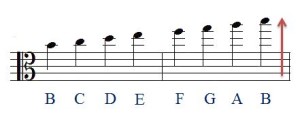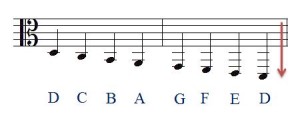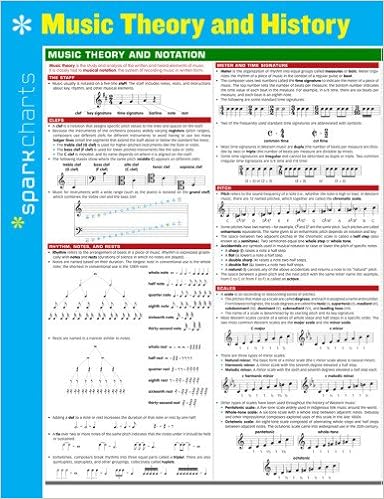| This reading music lesson is a supplement to the Alfred’s Essentials of Music Theory self-study workbook. While no book is perfect for learning how to read music, this is one of the best available. The concise explanations, brief practice exercises, ear-training CD’s, glossary of music terms, and answer key make it an excellent value. Buy this top-rated self-study course for beginners to advanced musicians and follow along with me. |
The best music theory book for self-study at home available today. Learn how to read and write music in 75 concise lessons you can complete at home. Improve your musical ear with ear-training exercises on 2 included CD's. Test yourself in a review section at the end of each unit. Check your knowledge with the answers in the back of the book.
The same process we used for the treble clef and bass clef ledger lines will be used once again for the alto clef ledger lines.
Find a note on the alto clef staff that you are already familiar with and move up or down from there using the music alphabet.
Up
Going up through the ledger lines means moving forward in the alphabet.

Down
Moving down through the ledger lines takes you backwards through the alphabet.

Coming up next is the ledger lines of the grand staff. There will be some interesting patterns here you may not want to miss…
Helpful Music Theory Reference Books and Guides
This foldable 8x10 inch music theory cheat sheet is an excellent quick reference guide when you need to find the answer fast. The side 3-hole punch allows you to keep it in a 3-ring binder. It is sturdy and folds out featuring music theory and notation on the front and music history on the back.
A practical pocket-size music theory dictionary and music notation reference guide that is perfect for all musicians from beginner to professional.
A convenient music theory book that is small enough to fit in your pocket, backpack, or instrument case. A great reference guide for all musicians at any level of music study.




